#Fashion Images de Mode
Text
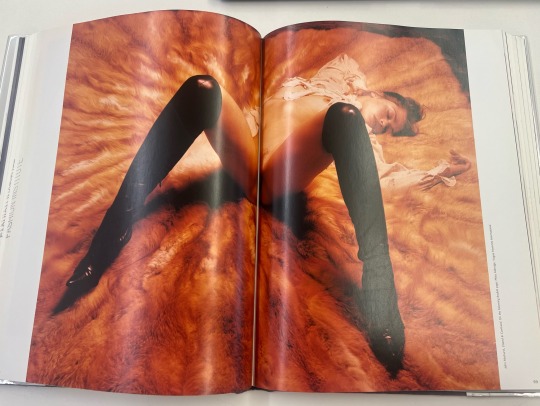
john Akehurst
9 notes
·
View notes
Text

Advertising Card. Hat by Antoinette und Caroline Reboux. Aus “Elegante Welt”. Foto: E. Schneider
view on wordPress
#Atelier Schneider#1920s fashion#hutmode#elegante welt#Ernst Schneider#fashion photography#feathered hat#Schneider Studio#fotografía de moda#fotografia di moda#Modefotografie#photographie de mode#fotografia de moda#feathered headgear#hut#mirrored image#1920s
74 notes
·
View notes
Photo
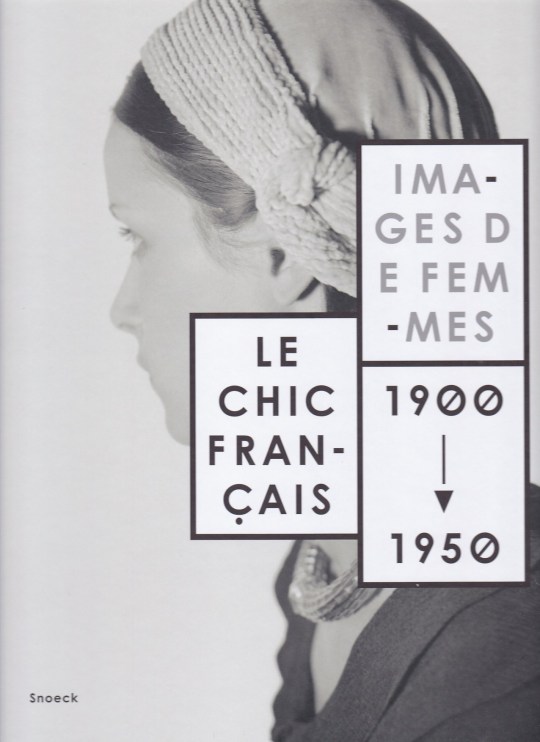

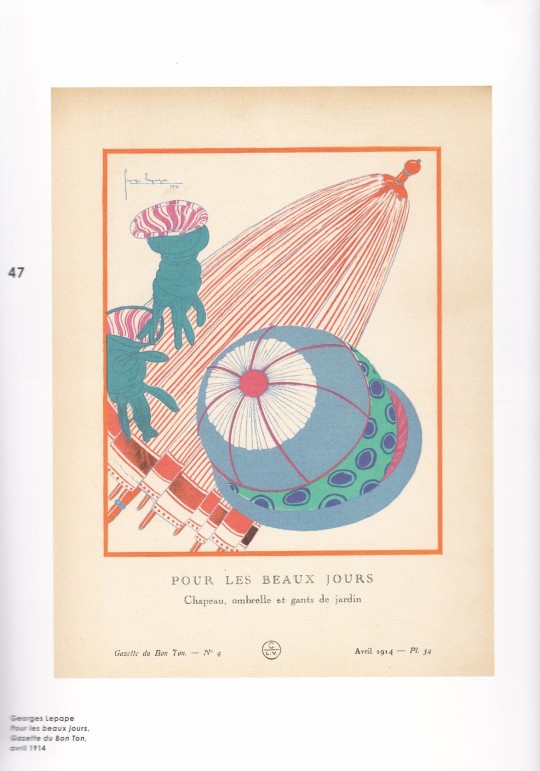






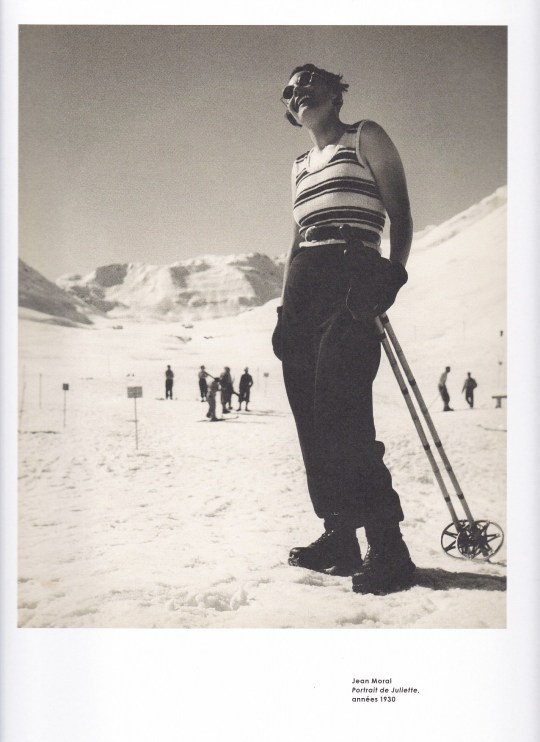
Le Chic Français
Images de femmes 1900 - 1950
Snoeck, Gent 2017, 256 pages, 25 x 30,6 cm., ISBN 978-9461614261
euro 18,00
email if you want to buy :[email protected]
Les débuts de la photographie de mode sont timides et peu audacieux. Si de nombreux magazines existent pour diffuser la mode au début du XXe siècle, le dessin y occupe une place centrale. Si dans les médias, la place de la photographie de mode connait un essor similaire à celui de la photographie en général, jusque dans les années 1920, les contraintes liées aux techniques d'impression ne favorisent pas son utilisation. Les poses restent statiques, les photographes travaillent en studio et les mises en pages sont rigides. Cette manière de figurer la mode est à mettre en correspondance avec le statut de la femme dans la société. Dans les années 1920-30, une « Nouvelle vision » s'impose. Des photographes (Jean Moral, Maurice Tabard, André Steiner, entre autres) soutiennent une photographie résolument moderne et différente. Les photographes multiplient les expérimentations formelles (angles de prises de vue spectaculaires, cadrages audacieux, sujets modernes) et proposent une nouvelle image de la femme, enfin libérée de toute contrainte. La photographie va donc accompagner l'émancipation de la femme durant cette période. Véritables touches à tout, ces photographes sont recrutés par le monde de la mode. Ils mettent leur savoir-faire au service des magazines et contribuent à diffuser l'image de plus en plus moderne des femmes. Ils participent à la reconnaissance de Paris comme capitale de la mode.
22/09/22
orders to: [email protected]
ordini a: [email protected]
twitter: @fashionbooksmi
instagram: fashionbooksmilano, designbooksmilano tumblr: fashionbooksmilano, designbooksmilano
#Chic Français#Images de femmes#1900-1950#Lepape#Erté#Paris capitale mode#photographie de mode#fashion books#fashionbooksmilano
9 notes
·
View notes
Photo


peggy sirota in fashion images de mode no. 2
5K notes
·
View notes
Text
I keep seeing people suggest Crowley's presentation in 1827 was feminine, and listen—headcanon what you want, I'm not your mom. But the justification is that he's supposedly dressed in feminine, as opposed to masculine, clothing? He isn't. You're just looking at Regency fashion with 21st-century eyes.

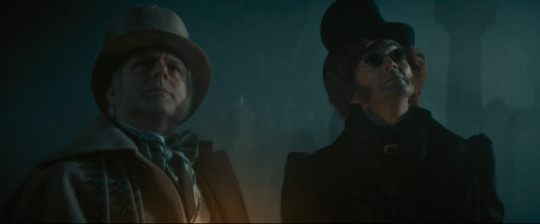
Both Aziraphale and Crowley are exemplaries of well-dressed gentlemen of the early 19th century, just in different styles.

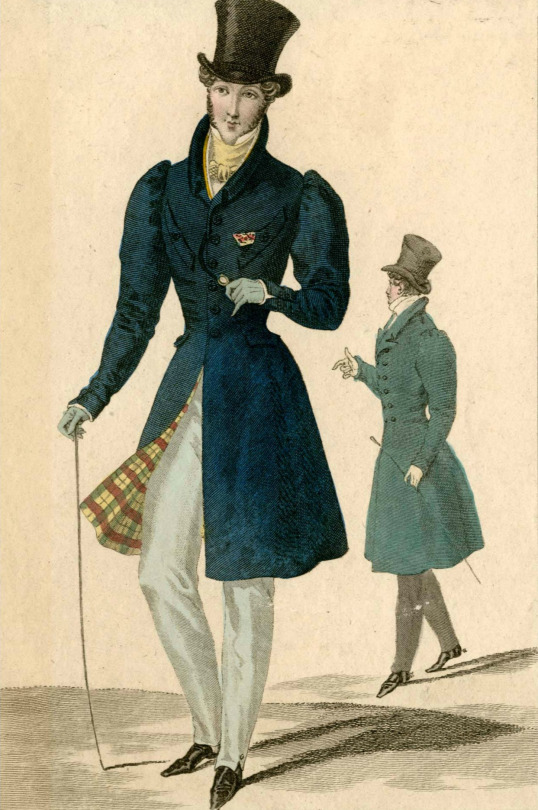
On the left, a many-caped greatcoat like the one Aziraphale is wearing; on the right, a coat with puffed sleeves and a narrow waist like the one Crowley is wearing. (Both images seem to originate from Journal des Dames et des Modes, 1811 and 1826, respectively.)
I also saw something about Crowley's fob watch actually being a chatelaine?

Again, I have to disagree. What Crowley's wearing just looks like a watch chain, which both men and women wore. What you can see is the chain and a charm at the end; the watch itself is tucked into a pocket (same as with Aziraphale's).
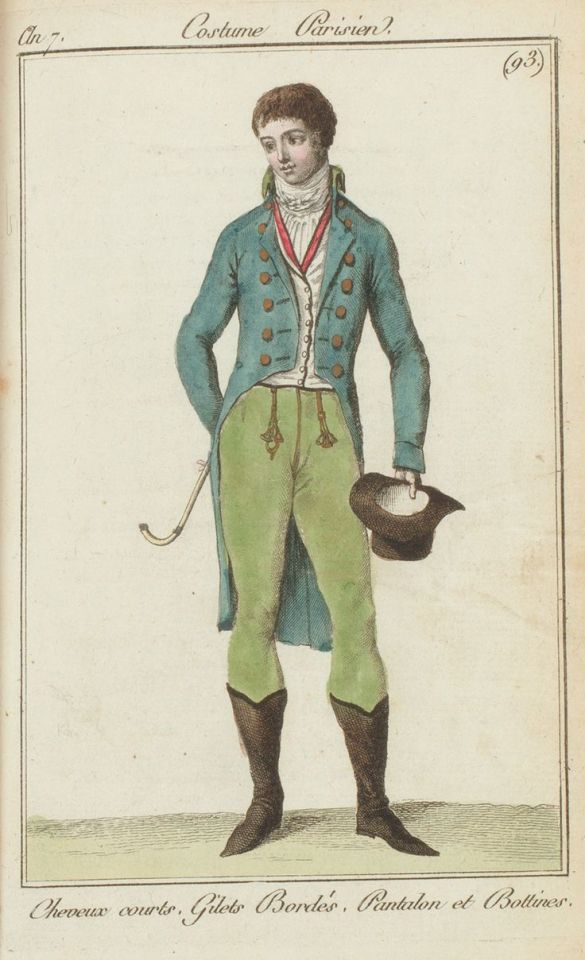

Watch chain (left; another plate from Journal des Dames et des Modes) vs. chatelaine (right, from here).
While a chatelaine could possibly refer to a decorative watch chain, the chatelaines specifically associated with women are the accessories worn by female heads of household or housekeepers (hence the name) to hold keys and other useful items. They could get quite elaborate. Crowley's doesn't look particularly like a chatelaine more than it looks like a watch chain, to me.
To sum up, there's not really anything I can see about Crowley's fashion choices in 1827 that specifically says "female presenting"; it all fits in with men's fashion of the time. You can headcanon whatever you want! But this particular era isn't one in which Crowley's wardrobe and styling definitively reads as feminine.
Note for a couple people with poor reading comprehension: TERFs are not welcome on this post. Fuck off.
#fynn posts#good omens#regency fashion#I am always Wary of wading into this especially because I've seen how spicy tw*tter-based fandom gets about interpretations#but it also irks me when people see men's fashion they don't understand and go “oh that's women's clothing”#so. yeah#1827? 1828? you know. around there. I missed that bit bc I was too busy failing to screenshot a gd watch chain#1828 was the westport murders but THAT'S ANOTHER POST
278 notes
·
View notes
Text

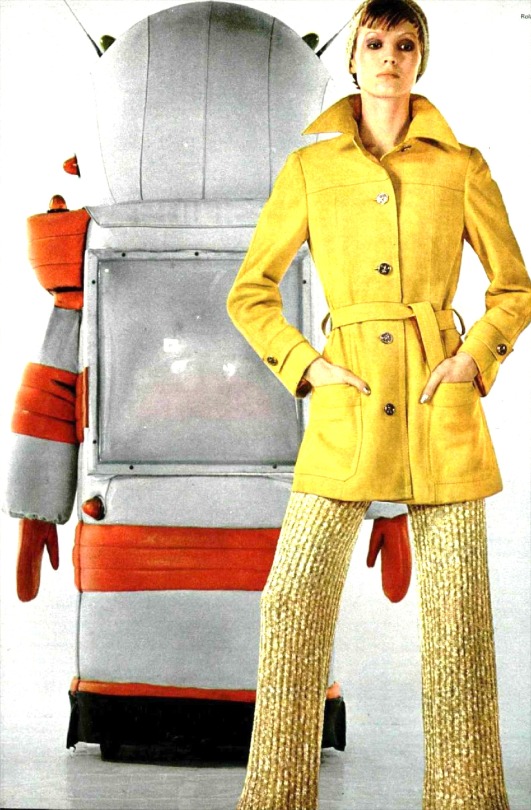
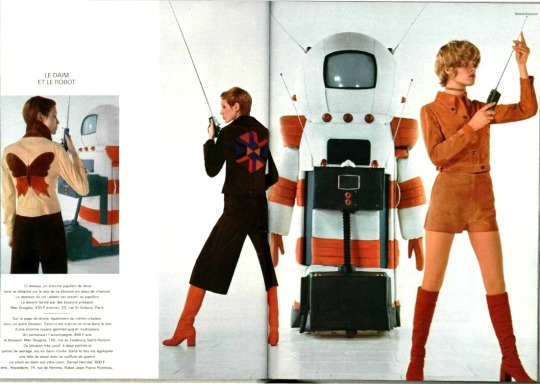
Le Robot by Jean-Pierre Ponthieu (1971), France. “An accessory present in certain fashion photographs, the robot belongs to the field of technology and contributes to making the image of clothing more modern. Very recurrent in science fiction, yet rarely of the female gender, we find the presence of robots in fashion photography. In 1971, L'Officiel de la mode associated certain outfits with technological accessories of great importance within photography. Women pose next to a robot, becoming a character in its own right in the photograph, belonging to Jean-Pierre Ponthieu, “builder of the largest and smallest cars in the world and futuristic machines” … The women are dressed in suede, as indicated in the title "The Suede and the Robot" … and pose on either side of the machine, holding what appear to be telephones whose long antennas echo those of the machine robot. We also notice a certain correspondence between the static pose of the models and that of the robot, from the front, as well as between its orange color and that of the suede. If a strong link is established here by photography between fashion and science-fiction, let us note that this is still not a question of clothing meeting the characteristics of so-called space age fashion. The meaning of the image therefore relates as much to the clothing as to the context in which it is placed.” – Mode et science-fiction à la conquête de l'espace, by Gabrielle Moussafir (p85).
73 notes
·
View notes
Note
Hey, I love this blog! Such a fun idea, it was an instant follow from me. I was wondering, do you know where the fashion plates come from? If so, I would find it interesting if you added the country/region to the post.
hello my dear! 💕
thank you for your super sweet words! ☺️ I'm so glad you're enjoying the blog! 🥰🥰
and thank you for your fantastic question! my answer is long, so I apologize in advance, but (un)fortunately, I have that Cannot Shut Up About Special Interest Autism™️ 😅, so here we go! (below the cut)
it's honestly a pretty mixed bag with knowing where things come from versus not knowing. some of the plates do come from digitized archives of particular publications that have publication info (including city of publication), but since by and large fashion plates fall under what I – as a visual culture historian – consider ephemera, they are, well, ephemeral, meaning that they often come down to us with less context than we might like
I will also say that even those that do come with publication info/location may very well have been distributed outside the city/state/region/country where they originated. for example, for much of the era of the "golden age" of fashion plates, Paris was The Spot for fashion, and so you get publications called things like "les modes de paris" (the fashions of paris) that are distributed not just in Paris and France, but also internationally so that fashion-conscious folks could see what was happening in the "fashion capital"
I guess all this to say that at this point it's not going to be super feasible for me to include location information for the plates, partially because that information isn't always available, and also because when folks submit fashion images to the blog (huge thanks to all those who have done this by the way – I so appreciate it and I love looking at what y'all send in!! ☺️☺️) I don't always have a way of checking sources, and I would hate to have that be prohibitive to people who want to send in images but might not have or be able to find that info
I will also admit that as a result of Certain Conditions of the Mind™️ by which I am afflicted, I would feel the need to go back in and provide that info for every plate I've posted so far, which feels very daunting. and again, that's totally on me – and I freely admit that – but that's just how my funky little brain works lmao 😅
I will end these unnecessarily long ramblings by saying a big HOWEVER, if there's ever a specific plate that you'd like a publication location for, I can do my best to try and find that for you! ☺️☺️ there are also some fantastic blogs like @/chic-a-gigot that include more detailed publication info with the fashion plates they post. I'm also happy to point you in the direction of some digitized archives and collections if you're after more specific info for research/academic purposes 🥰🥰
sorry this got so long, but thank you so very much again for your super kind words and for your great question! 💕💕 I'm sorry I don't have a more satisfying answer for you, but hopefully this makes at least some sense ☺️☺️ I hope you have a wonderful day!! 🥰💖
21 notes
·
View notes
Text
She retired from the biz a few years ago, moved 3 states away, competed for Cover Girl status for an "ink" publication. There's life beyond SF for Quinn yet she's still probably a Marlboro 100s Girl!
NEW SERIES!
VIDEO OF THE WEEK 🚬
🚬 (SF HALL OF FAME) 🚬
NUMBER 6 IN THE SERIES!
For the Week of 100223-100823
★ ★ ★ ★ ☆ | Four-and-a-Half "Stars"
From vs120shound staff | ★★★★★ (16 total: L)
Tri-Media 9-Post, 44-
Pack (Super-Megapost)!
Quinn from USA Smokers!
"No Menthol Girl here. This is a Marlboro 100s Gal! . . . Sure, she is pretty, very much so. But she’s as cute as a button, and then some. Sexy as a woman can be, to the order of being adult industry worthy. Wonderful smoking style, confident and alluring. Heavy smoker. Firmly addicted. Playful. Funny. Authentic. A joy. A treat. A treasure to behold. Understands and appreciates the smoking fetish. Proud of her habit. Enjoys the ritual of smoking. Acknowledges smoking is an identifying part of her personae. Girl-next-door look with a Goth flavor. Complimentary, exciting, trendy, fashion-setting, attention-grabbing and colorful outfits. Into tattoos big time. Excelled in partner shoots with other SF models.
"Left the website’s stable of SF models when she moved from Arizona to the Seattle, Wash. area, saying good bye to the SF World in 2021. Our loss. Her run was sensational for as long as it lasted. SF Hall of Famer. Smoking Goddess. A dream come true who walks, talks, loves and smokes. For that, we are grateful. Amen!"
. . . well, the Lead Introduction (what you are reading here is the secondary Intro) was lifted nearly verbatim -- with minor edits -- from the January 14, 2023-released post announcing tattoo-loving Quinn as our Number 3 selection for the "unofficial" official Top-25 all-time favorite SF models list distributed on vs120shound! Not much more to add other than we have no idea of the combined number of SF models/SF entrepreneurs/Social Media Smoking Darlings among the the three administrators and the 10 staffers for the ole VS120s Hound SF-Content Shop that have been seen -- viewed, glanced at, studied and downloaded over the years! So to say that we collectively rate only Ariel/Arielle "Skittlez Cano" (No. 2) and Laura from Australia (Snaps Random) as more beloved is saying a lot!
Hope Quinn is healthy, happy and safe in Greater Seattle with even more grand "ink" on her sexy little body! Know she's still smoking cigarettes, still probably with Marlboro 100s. And be prepared for this realization: Soon, if not already at the threshold, Quinn will be approaching the Big 3-Oh (30 y.o.). She must be in her late-20s by now! Ah, how enticing, the vision of a slightly more mature Quinn!
Quinn, No. 3 All-Time
SF Model, The Media:
As announced on vs120shound
in January 2023 for "The List!"
(In order) . . .
GIFs (2); previous posts within our network of 4 blogs/vlogs/webpages (8); Instagram videos and "Reels" (5); links (contained within text) for Instagram videos (2); YouTube videos (2); photos from www.usasmokers.com and Facebook.com/usasmokers (9); anchor picture, à la Solène post mode (1) . . . 3 centerpiece photos used as "section breakers!"
GIFs (Graphics Interchange Format) of Quinn!
From de-activated smk-images on February 14, 2022 . . .

From USA Smokers website . . .

Previous Posts Featuring
Quinn within our network
From vs120shound on January 31, 2023 (in a compilation video with stablemates Preslie and Amber; Quinn leads off) . . .
From vs120shound on January 14, 2023 . . .
From vs120shound on November 22, 2022 . . .
From vs120shound on November 21, 2022 (digitally-enhanced through AI by Juniorjunior from Smoking Fetish Kingdom) . . .
From vs120shound on July 29, 2021 . . .
From vs120shound on January 8, 2020 . . .
From vs120shound on March 13, 2019 . . .
From vs120shound on July 31, 2018 . . .
Quinn exhaling with a tight cone!

Social Media!
From Instagram@usasmokers on July 25, 2019 . . .
instagram
From Instagram@usasmokers on April 30, 2019 . . .
instagram
From Instagram@usasmokers on March 10, 2019 . . .
instagram
From Instagram@usasmokers on November 25, 2018 . . .
instagram
From Instagram@usasmokers on September 23, 2018 . . .
instagram
Links to some IG "reels"
From Jan 6 2020:
https://www.instagram.com/reel/B6_74_9lYQJ/
From December 24, 2018:
Quinn posing with a Saratoga 120s!

From YouTube!
From YT's "Sensuality Soft" webpage in 2020 . . .
youtube
From YT's "Smoking Girls" webpage in 2020 . . .
youtube
Photos of Quinn!
From www.usasmokers.com and Facebook.com/usasmokers . . .




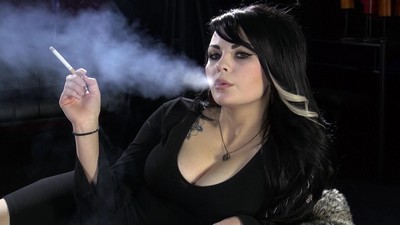
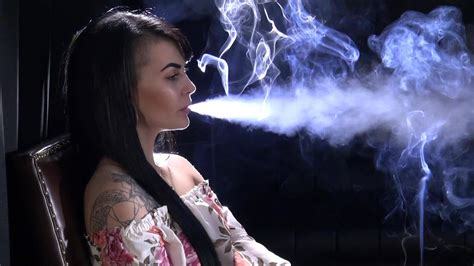



Quinn dangling a lit Marlboro 100s -- our anchor piece!

#SF#Hot women who love smoking cigarettes#Smoking cigarettes#Smoking#The Video of The Week (Honorable Mention)!#The Video of The Week (HoF) . . . Hall of Fame!#Quinn from USA Smokers (Arizona - U.S.A.!#Instagram#Youtube
51 notes
·
View notes
Text
Intro Post!💀🦇🕸🕯
Hey there! Figured I'd finally make one of these in case anyone who stumbles on this blog wonders what it's all about.
As it says in my blog description, this is an online space where I can compile and organize imagery, info, and anything else that inspires me related to the novel I'm developing. At least that was the original motivation for making this, but I'm definitely wanting to post some original content surrounding the story and the characters in it soon! This imaginary world has been obsessing me for a few years now, and I'm honestly chomping at the bit to share it with others.
What you'll see on here:
Images related to: gothic lit, the regency period in Europe/Britain, the late 16th/early 17th century, some earlier 18th century, ancient and prehistoric cultures, paganism, the occult, witchcraft, fairies, folklore, the countryside/forests, autumn, Halloween, demons/devils, romantic fashion, screenshots and gifs from films, illustrations/other artists' art that inspires me, and any other random pic that speaks to me or that gives me an idea even vaguely related to the story.
Text posts relating to: all the same subjects above, plus quotes from poetry and literature, other stories that inspire me, and writing advice posts/memes.
Hopefully soon: posts introducing my characters and sharing concept art, ideas, research I've done, who knows what else??
***Content warning for some imagery that may be disturbing (as can be expected, I guess, from a horror aesthetic/theme).***
What the novel's about:
It's [going to be] a gothic/dark fantasy/folk horror/historical fiction novel set in regency Britain and centering around the concept of Halloween and its origins/meaning. Think Jonathan Strange & Mr. Norrell meets Over the Garden Wall. Kinda. Characters include a bratty aspiring sorcerer, a demonic changeling who wants to be human, a witch, a sin eater, and a handsome devil. Over the course of the plot the question of whether the spirit realm(s) and mortal world should be kept separate will be a source of conflict.
I've had some aspects of this story/characters in my head since I was 14, so it's super special to me!
About me:
I'm an artist, writer, and musician. This is my first time trying to write anything as involved as a novel. I'm having loads of fun with it, though. I love music and reading and history, particularly fashion history, and anything related to the supernatural. The title of my blog is a reference to a song by Echo & the Bunnymen (though I think it's actually an inaccurate lyric :P ).
Ficton books I've been reading lately: Jonathan Strange & Mr. Norrell by Susanna Clarke, The Shadow of the Wind by Carlos Ruiz Zafón, Anne Rice's Vampire Chronicles books, Edgar Allan Poe short stories
Nonfiction books I've been reading: The Devil and All His Works by Dennis Wheatley, Celtic Mythology by Philip Freeman, The Making of Victorian Values by Ben Wilson, Occult Features of Anarchism by Erica Lagalisse, Halloween by Lesley Pratt Bannatyne
Some musical artists I'm into recently: Cranes, Kate Bush, The The, The Smiths, Fiona Apple, Alex G, Caroline Polachek, Imogen Heap, Depeche Mode, Fad Gadget, Pinback, Steeleye Span, The Cleaners From Venus, Suzanne Vega, The Garden, Jessica Pratt
Visual Artists I've been thinking about lately: Edward Gorey, Aubrey Beardsley, Nicole Rodrigues, Francisco de Goya, Leonora Carrington, Brian Froud, Wendy Froud, Willam Blake, Edvard Munch, Harry Clarke
Some of my favorite films: The Witch, Valerie and Her Week of Wonders, The Wicker Man (original), Meshes of the Afternoon, Days of Heaven, The Thief and the Cobbler, The Masque of the Red Death
Regardless of why you're here, I sincerely hope you enjoy browsing around, and feel free to say hi! :) I would love to link up with other writers on here and make some new pals. Also feel free to like this post and I'll give you a follow!

#writeblr#writeblr introduction#new writeblr#writblr#writeblr community#divider found on the blogs cold--carnage and sweetparty
14 notes
·
View notes
Text
Fashion in 1914 -
1915 (first exhibited) Rose, née Boote, Fourth Marchioness of Headfort by Sir William Orpen (auctioned by Sotheby's) slightly increased exposure 1244X1675.
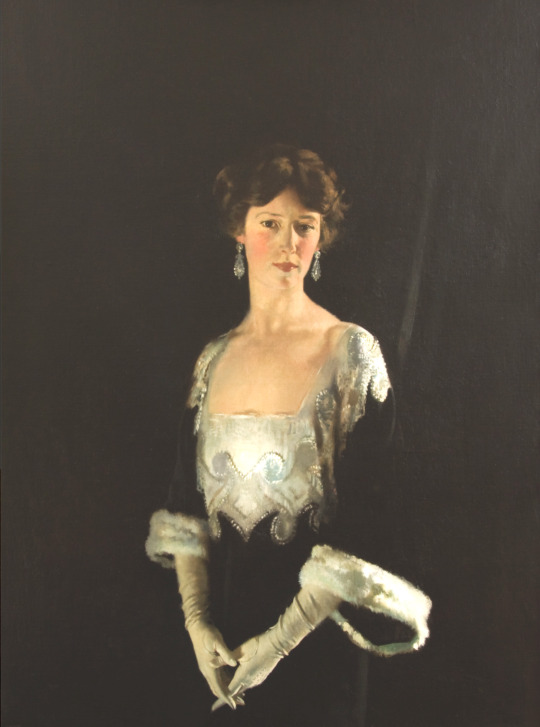
Left 1914 (July) Another ensemble by Jenny, Les Modes - photo by Félix. From les-modes.tumblr.com/page/18; fixed spots w Pshop 725X1920.
Center 1914 (July) Ensemble by Jenny, Les Modes - photo by Félix. From les-modes.tumblr.com/page/18 696X1920.
Right 1914 (June) Evening gown by Lucile from Les Modes From les-modes.tumblr.com/post/52480680436/evening-gown-by-lucile-les-modes-june-1914; fixed spots & flaws w Pshop 1109X1920.



1914 Doña Ascensión Reynoso Mateo by Enrique Dorda Rodriguez (private collection). From history-of-fashion.tumblr.com/image/125539729854; fixed bigger spots w Pshop 861X1308.
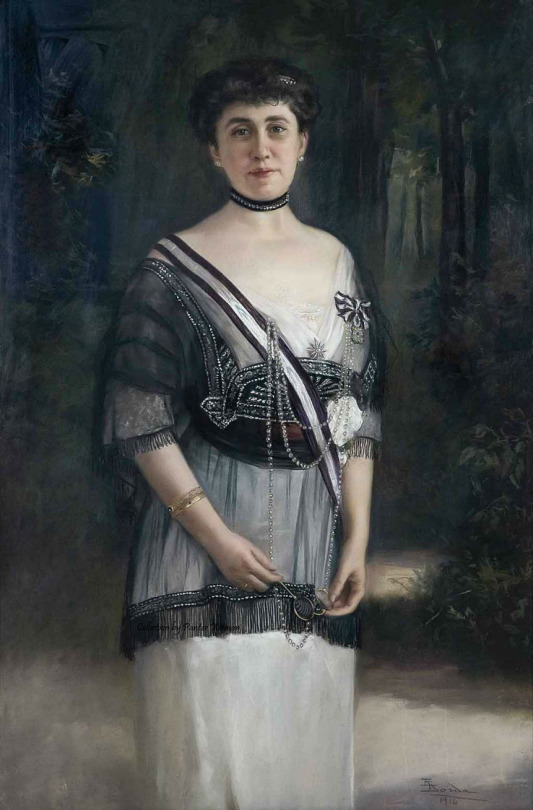
Left 1914 dress for the races. From messynessychic.com/2018/04/27/lovely-ladies-in-lace-at-the-paris-races; removed print with Photoshop and cropped 857X1242.
Right 1914 Les toilettes à Longchamp with umbrellas (Bibliothèque nationale de France - Paris, France). From their Gallica collection 820X1178
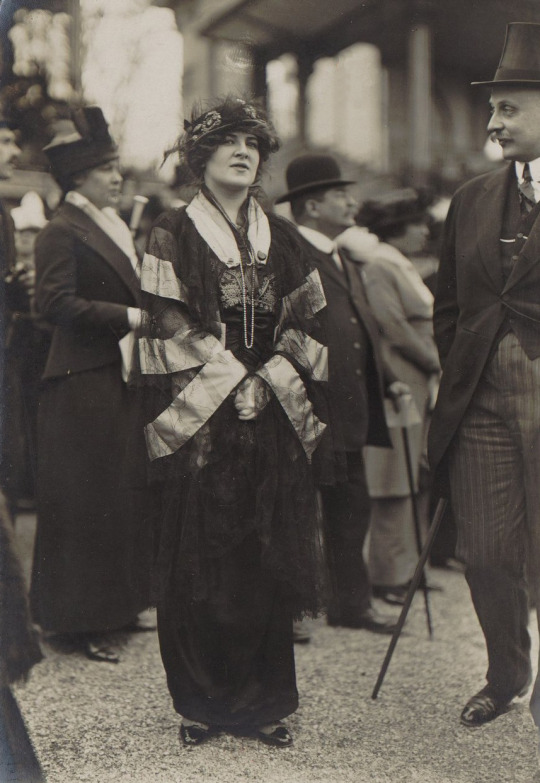
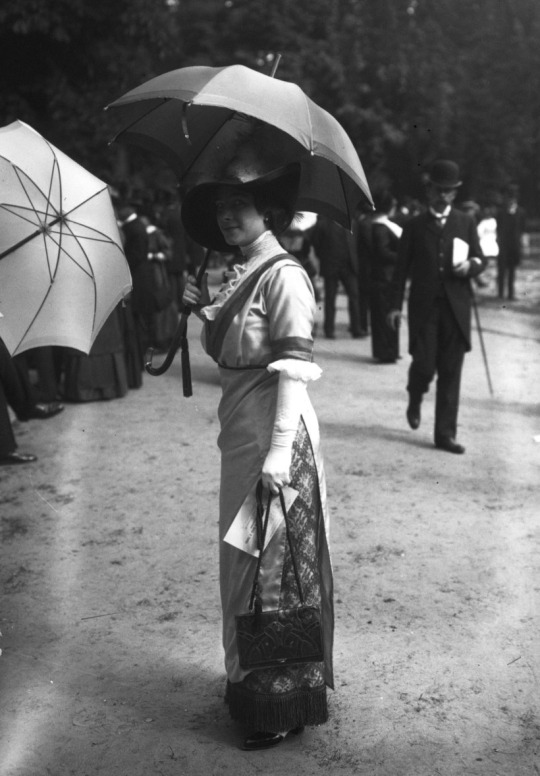
1914 Duquesa Sofia de Hohenberg by C. Kofel. From Wikimedia; fixed spots w Pshp 933X1483.Her assassination along with her husband Archduke Ferdinand's in Sarajevo triggered World War 1.
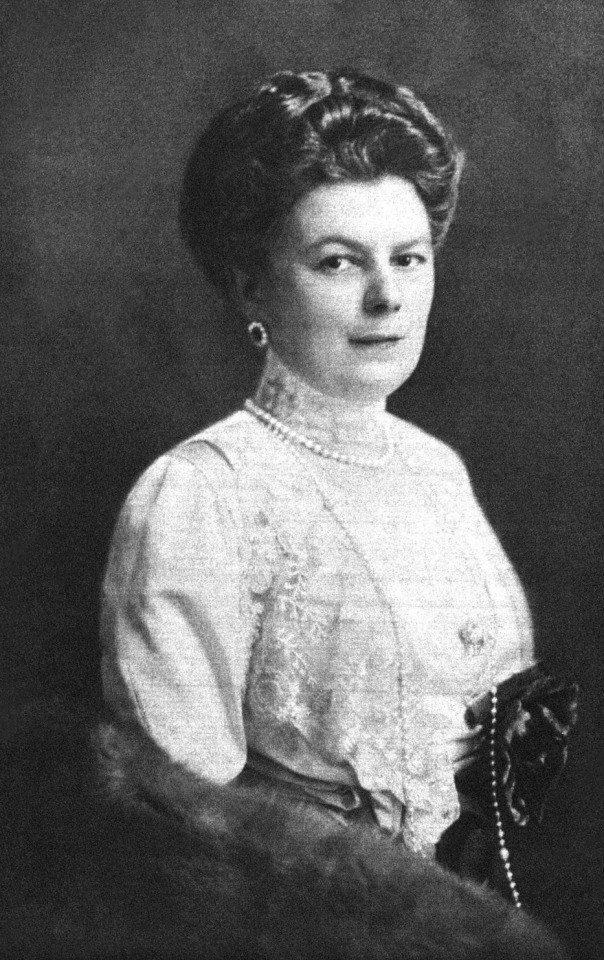
1914 Gazette du Bon Ton "Le Choix Difficile Manteau du soir de Worth" by Boutet-DeMonvel artophile.com 750X1096.
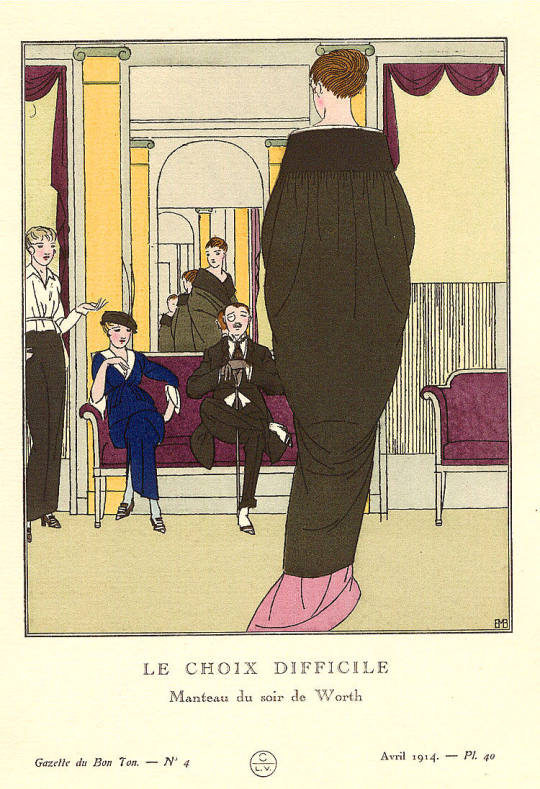
1914 La Inglesa by Ramón Casas (auctioned by Sotheby's). From their Web site 692X1983.
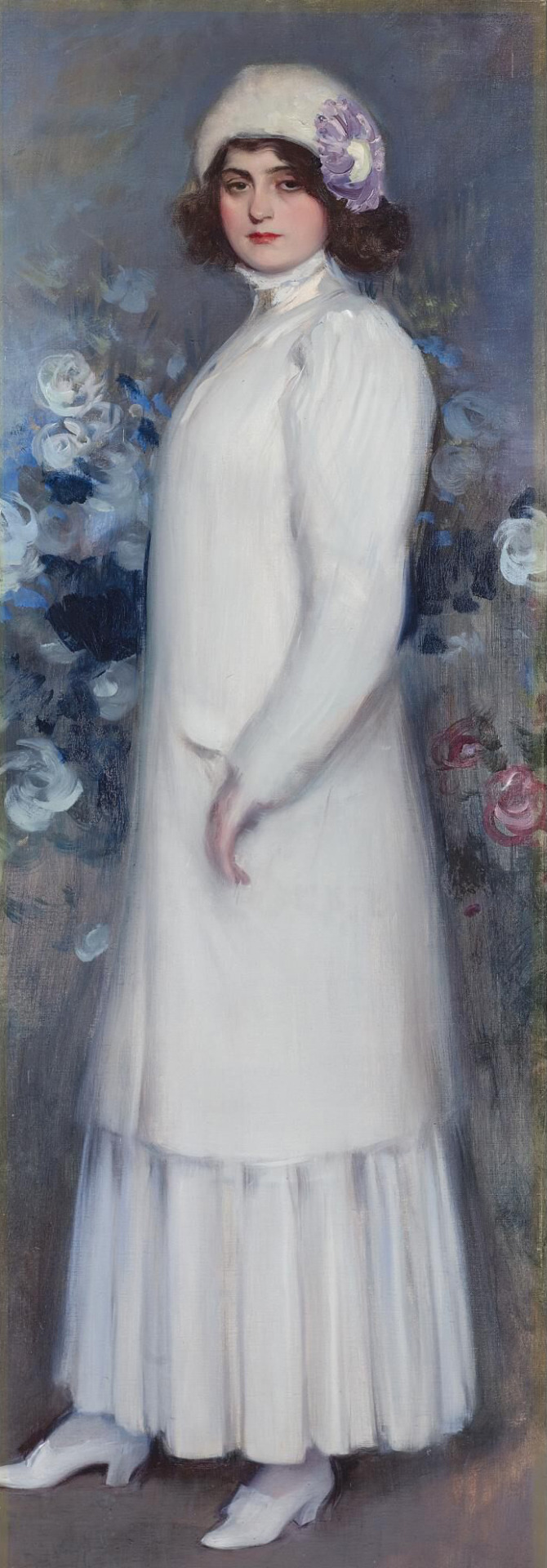
Left 1914 Longchamp, modes aux courses (Bibliothèque nationale de France - Paris, France). From their Gallica collection; removed spots and fixed upper edge with Photoshop 834X1261.
Right 1914 Longchamp, modes aux courses small hat and blouson bodice (Bibliothèque nationale de France - Paris, France). From their Gallica collection; removed spots with Photoshop 787X1287.


1914 Mlle. Gabrielle Dorziat by Robert Sauber (location ?). From jeannepompadour.tumblr.com/post/120549819170/mlle-gabrielle-dorziat-by-robert-sauber-1914 via pinterest.com/tailleboisfabienne00/peintures/ 1053X1920.

Left 1914 Mode à Longchamp (Bibliothèque nationale de France - Paris, France). From their Gallica collection 821X1201.
Right 1914 Modes du Derby à Chantilly (Bibliothèque nationale de France - Paris, France). From their Gallica collection; removed spots and flaws with Photoshop 936X1181.


Left 1914 Parisian fashion of the end of the Belle Époque 0. From yadi.sk/a/bVdkli-N3ZRDZc 819X1191.
Right 1914 Parisian fashion of the end of the Belle Époque 1 (1). From yadi.sk/a/bVdkli-N3ZRDZc 825X1181.
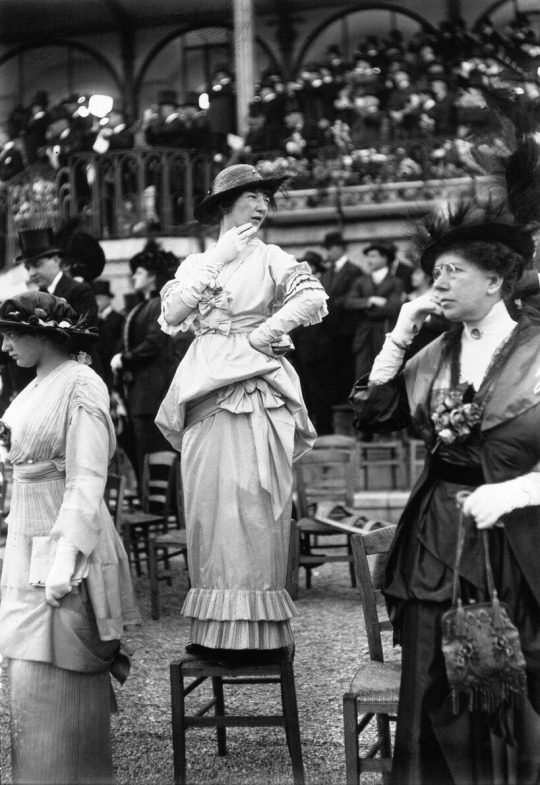
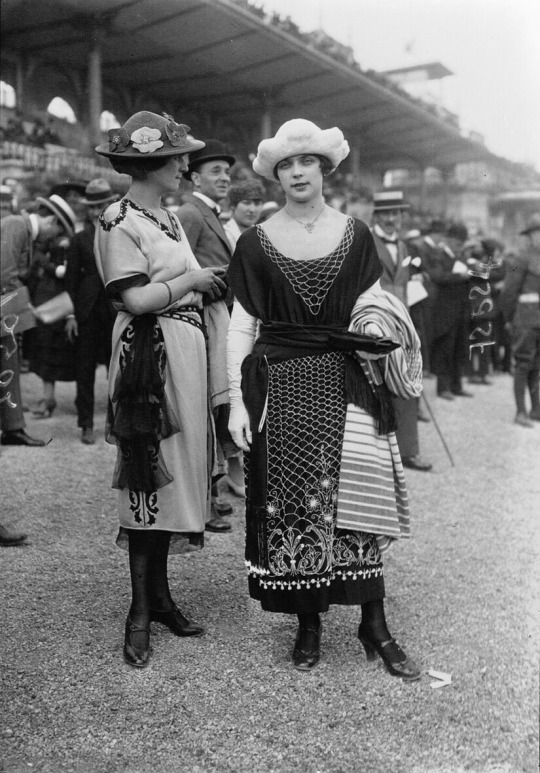
1914 Parisian fashion of the end of the Belle Époque 1 (8). From yadi.sk/a/bVdkli-N3ZRDZc 1096X847.

Left 1914 Les Modes Art Nouveau style Robe du Soir by Baron Christoff von Drecoll. From tumblr.com/mote-historie/732354780761079808/robe-du-soir-par-drecoll-les-modes-paris-1914?source=share&.
Center 1914 (August issue) La Gazette du Bon Ton L'Arbre de Science (The Tree of Science), Robe du Soir de Georges Doeuillet by George Barbier. From tumblr.com/mote-historie/730912140703268864/george-barbier-larbre-de-science-robe-du-soir?source=share&.
Right 1914 1914 La Femme Chic à Paris by Souchel. From tumblr.com/fashionsfromthepast/744198373624725504? 1802X2381.



Left 1914 Parisian fashion of the end of the Belle Époque 1 (1). From yadi.sk/a/bVdkli-N3ZRDZc 825X1181.
Right 1914 Parisian fashion of the end of the Belle Époque 1 (26). From yadi.sk/a/bVdkli-N3ZRDZc 679X1025.
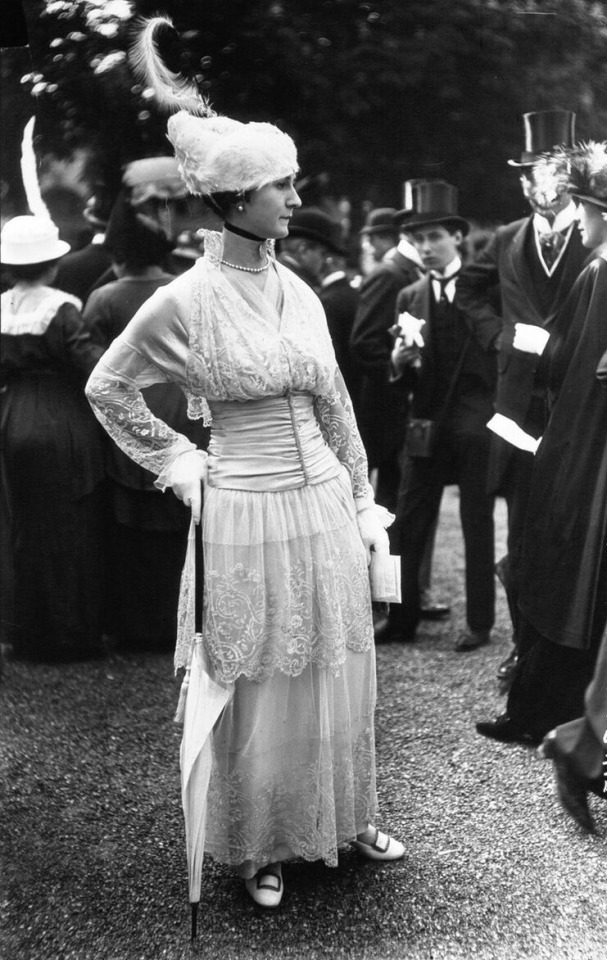

1914 (January issue) Femina illustration by Georges Lepape. From tumblr.com/mote-historie/731824161202307072/georges-lepape-fantasie-sur-fantaisies-la?source=share& 1158X659. A satirical opinion of Poiret Sorbet style?
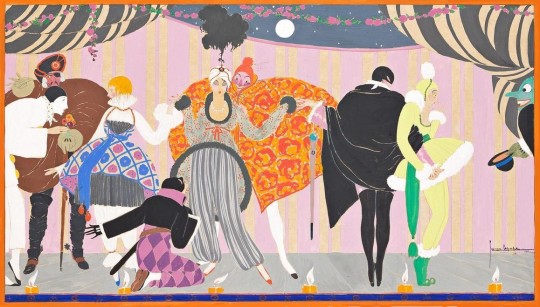
#1914 fashion#Belle Époque fashion#Edwardian fashion#dress for the races#Rose Boote#Ascensión Reynoso Mateo#Gabrielle Dorziat#Sophie von Hohenberg#Drecoll#evening dress#Doeuillet#Barbier#Lepape#Poiret
44 notes
·
View notes
Text
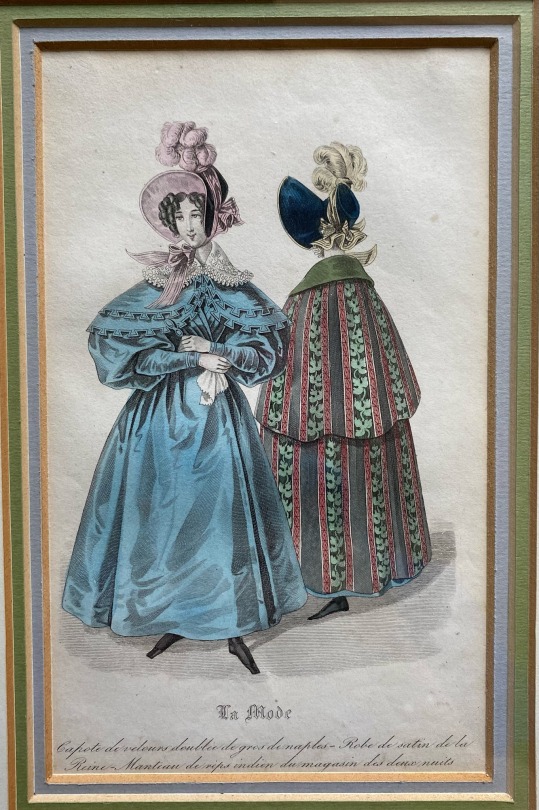
Here is the first of the pair of plates that started my collection. I found them at an estate sale, already framed with these matching mats. Whoever owned them before me clearly loved them. They are from the 1830s and in very good condition. I will post its other half shortly.
The text reads:
La Mode
Capote de velours double de gros de naples- Robe de satin de la Reine-Manteau de rèps indien du magasin des deux nuits.
In English: (I couldn’t figure out what ‘rèps’ means)
The Fashion
Double velvet hood wholesale of (from) Naples- Satin dress of the Queen-Raincoat from the Indian store of the two nights.
A note on translation: yes, ‘capote’ is used to mean ‘condom’ these days, but literally it means ‘hood’.
[Image ID: a framed fashion plate with two models and two frame mats, one blue and one green. The woman on the left faces the viewer. She wears a pink bonnet with four large pink feathers in the center trimmed with a stripped pink ribbon. Her temple curls peak out of the brim. She has a wide, square-shaped collar of white lace. Her dress cornflower blue with large sleeves puffed until the elbow and v-shaped pleats on the bodice. It has a small matching shoulder cape or shawl with an edge of trapezoidal cutouts.
The second woman is turned away from the viewer, her fave hidden by a bonnet of the same type as before, but dark blue with white trimming. She wears a grey two-tiered cape with a green collar and striped with two thin red bands with a green ivy pattern between.]
#fashion history#historical fashion#fashion#image#fashion plates#image id#1830s fashion#1830s#fashion plate#victorian fashion#early Victorian#womenswear#armature translation#french translation
79 notes
·
View notes
Photo
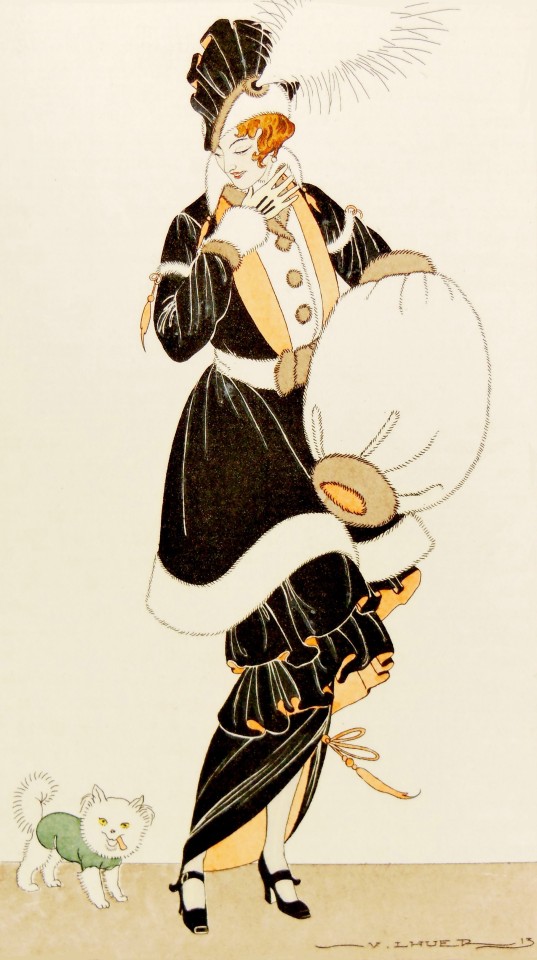
1913 Victor Lhuer, Costumes Parisiens. Charmeuse robe trimmed with sable and ermine. Ermine vest. Clergyman shoes. (Robe de charmeuse garnie de zibeline et d'hermine. Ghilet d'hermine. Souliers clerggyman). Journal des Dames et des Modes.
This remarkable pochoir fashion print is from Journal des Dames et des Modes, Costumes Parisiens. The work was published between 1912 and 1914 with only 1,279 copies printed in total. Leading artists of the time contributed to the Journal including Barbier, Brunelleschii, Bakst, J. van Brock, Wegener, Drian, and many others.Journal des Dames sought to be an expression of French elegance. It showed the fashion and also the culture of the early 20th century. Each illustration was printed on high quality paper using excellent pochoir coloring. Pochoir is created when single layers of color are added by hand to a lithograph using a stencil.George Barbier's contributions to this work are particularly desirable. He contributed greatly to design in this era and also had work featured in Vogue. --- The work is in very good to excellent condition overall. There may be a few minor imperfections or faint marks to be expected with age. Please review the image carefully for condition and contact us with any questions. --- Paper Size ~ 5 1/2" by 8 3/4". Seller Inventory # dames128.
AbeBooks
#1913#illustration#fashion#fashion illustration#la belle epoque#art nouveau#art nouveau illustrator#art nouveau illustration#victor lhuer#V. Lhuer#costumes parisiens#charmeuse#ermine#clergyman#journal des dames et des modes#fashionable dress#pochoir fashion print#pochoir#fashion print
13 notes
·
View notes
Text

donna trope in fashion images de mode no. 4 - lisa lovatt-smith
11K notes
·
View notes
Text
Mémoire de la Mode - Yohji Yamamoto
by François Baudot (1997)
Those who wear my clothes try to assert a single opinion,” says Yohji Yamamoto. This essential way of thinking about fashion, which he has succinctly expressed for more than 20 years, sums up his own creative activity. In contrast to the extremely rich era of haute couture, the glorious side of prêt-à-porter, and the futurism of the avant-garde, Yamamoto, a Japanese man, asserts the strength and difference of Yamamoto's style in a small but decisive way by returning to clothing archetypes, choosing neutral expression, and employing a simplified palette and register. The return to traditional Japanese patterns and the use of a more neutral expression, a simplified palette and registers (designs), all of which gradually but definitively assert the strength and difference of the Japanese style. Examining the couture of Paris as well as the traditional Japanese garments, the silhouette of his work explores a whole new realm of fashion appearance and behavior. In this turbulent century, more has emerged than has been raised in a thousand vears of fashion issues.
The couturiers who had been at the height of their powers in the 1950s were forced to admit that in the decade that followed, the power of the designers was slowly being established. These designers contributed to the growth of the big brand manufacturers,
The first generation of "young creatives" was born. The style of the young creators, a necessity for the majority of Parisians, would later suffer from a regimentation of Italians who were transformed into better and better supporters.
Thus, from 1965 to 1985, many of the directions of couturiers and fashion creators in the bretaille were developed, loved, and organized. The focus, the baroque, the traditional exuberance, etc., were all confined to their own creations, which in the early 80's were documented by those who would be defined as "conceptualists". This expression of premillennialism is a new trend that emerged in the plastic arts between 1950 and 1970, in which ideas, qualities, and analysis of concepts and results took the place of the body of work through the artist's creative activity.
This is precisely the "opinion" that Yamamoto presents. The public art of dreaming is considered elusive, but it wants to approach the public from the outset, while focusing on the real.
Today's fashion follows artists whose work has not been consumed by the market economy for the last ten years or so, and minimalist artists are proud of their fame as somewhat distant successors to Marcel Duchamp. The monochrome paintings of Ad Reinhardt, the charcoal forms of Donald Judd, Sol LeWitt and Karl Andre, the ergonomics of everyday materials, the theatrical art of Janis Knellis, Mario Merz and Giulio Paolini, the so-called Arte Portuguera, are just a few of the artists who are represented. These variations of modern art are the most important examples of the modern art of the past. These variations of modern art tend to be all about integrating the everyday into the everyday life, to bring the short image back into its original role and to capture it from a new perspective, whether it is a block of paper, a torn poster or the neon lights of a metropolis.
Even if Yamamoto does not seek the status of a so-called artist, his later works show an unusual sensitivity to the currents of the times by not using an original approach to the body of art. It is the same as what the couturiers of the previous era showed against cubism, Russian ballet, or pop art. For example, Andy Warhol, in his hot tea in the 70's, uses the verbal expression "a department store is like a museum" and turns the expression upside down to "I like Rome, because it is a museum after all, like the department store in Bloomingdale’s".
Pulte Pozzella goes even further and uses the same primitive elements of this addition, such as scraps, shavings, starch, coal, etc., as the main ingredients of the original product. In the same way, amoto is one of the few who, in the turbulent thirties, reads a rupture with the traditional idea of "entertainment". Likewise, Yamamoto is one of the few who, in the turbulent thirties, reads of a disconnection from the traditional ideas of "entertainment". He is one of the few who reads a break with the traditional idea of "kogei", which until then had been considered fascinating!
In order to accept the bags, he redefined his own relationship with the male (or female) body, redefined the relationship between beauty and certainty, antiquity and the future, and memory and modernity in a way that has become a tradition in a context where most people have no separate understanding of the relationship between these things.
Black, "the silhouette of all silhouettes in the shadow of the ultimate plate," is the best weapon for questioning what we wear, as was the case with Chanel in the early part of this century. The collection is a true dress for shadows, encompassing the silhouettes of mystery, without house-cloths, anchors, or detailing. In the midst of a glorious body of beauty and a civilization that is unspoiled by any day, Yamamoto invented a new discipline: summiting. His originality has no national origins, no beginnings, and even the slightest pretension has been removed. In other words, "back to the core". This is his philosophy of hair persuasion.
His creations, which are the source of his ideas for means and costumes, represent the national trend toward the impractical idea of 1. In response to the definitive selection of the eponymous quality of "elegance," he transposed it into an environment that is recognized as beautiful and vernacular in our time. In its ascetic variations, Hara Shu's archaeological₴, or Sugata's style, continually reexamines itself, blurring the line between the ephemeral and the immutable. Thus, like all important events in the fashion world in the past, the "classic" is born.
The modern form of the dress is a secret, enduring elegance with contemporary significance.
The wealth of the world is maximized by the power of the mind.
His surname means "at the foot of the mountain". In 1943, he was born in Tokyo and grew up in a small town called Kogei.
He grew up in Japan, where his parents, both war widows, were the elders of the Imperial Japanese Navy. He grew up in Japan under the guidance of his father, a war widower, who was the head of the Northeast Asian Women's Association (NWA).
Without any certainty, he attempted to enter the elite society of Japan with the given discipline and purpose. However, he surprised his parents by finally deciding to return to their place. As a condition of working in the store, his parents wanted him to attend the famous cultural and artistic exhibitions. Although this was to help him learn the basics of the trade, it was a problematic, emotional, and busy few years for him. The only male student was Yamamoto, the highest paid student in the school.
The reason is that he was a student. The only thing that the remaining customers later asked for was a copy of Bali's latest model. But the hardest part of the evening was that whatever little money was made from it could be used for one's own production.
In 1UGU, Yamamoto enters a competition and receives a bariatric travel grant. He spent eight months in the heart of fashion without a single centimeter and without money. It was enougn to find work as a designer. He spoke no French, hardly spoke a word of the language, and made all kinds of tea instead. He was particularly interested in the bret-a-porter that was then emerging in Saint-Germain-des-Prés. He felt that he had become fascinated by this kind of artlessness.
After returning to Tokyo in 1972, he established the Y’s Company, which presented its first collection in Tokyo in 1977.
In 1981, he participated in a fashion show in Paris with Kawakubo. Later, in 1981, he and Kawakubo participated in a fashion show in Paris, which caused a sensation in Paris. At this time, the world's press was forced to decide where to go. The question was whether or not they would accept the change in fashion and fashion show format that had been working so well. While there was a lot of criticism about the show, there were also voices from the side of the fashion industry that were opposed to the show. The unknown artists were now in the limelight amongst the solder community.
The Liberation newspaper on the day of the show was titled "A leading role for Japanese in the French fashion world". Michel Claesol wrote: "The original surfaces that we will dye in 1982 will be worn for the next 20 years -
What Courrèges and Cartan proposed around 1200 as being applicable until the year 2000 AD is now as old as a Soviet science fiction movie. For a long time, French couturiers thought that couture, like science, was a way to right the wrongs of the past. But Japanese designers foreshadowed something when they wrote, "Japanese designers are preparing to make it possible for real families to quickly decide what clothes and accessories to wear when they have only 30 minutes before going out • • • •
This premonition was confirmed 15 years later when Yamamoto became a businessman as well as a creator. In 1981, he began to work on costumes, the cornerstone of conservatism, although he himself pronounced that he was not interested in money and had little of it. He was the first to take up the position of vice president of the company, and he was the first to be promoted to the position of president.
To accompany him, he thought he had to break the heavy connotation of the three-piece costume. As a result, he came up with a costume that was soft and dusky without escalating the extremes. The White shirts are an expression of neoclassicism without being harsh or authoritative.
Low folds, narrow shoulders, three-button jackets, pants that bend at the hem and narrow at the knee over well-polished shoes - all have had a decisive influence on the male silhouette for more than a decade. But he has the skill to weave in the constancy of the waterway, to put many men at ease who do not want to feel like victims of the mode. In a recent film set in Germany during the period between the two world wars, a dressmaker is accused of artificiality and of being "a man of the world".
The actors are dressed in Yamamoto style without making anyone feel "retro".
If fashion is about clothing, it is not essential. But if fashion is to feel our daily life, it is not indispensable. Painting, crimping, and other art forms,
There are very few things that can directly influence people, such as fashion and music, which are inexpensive. Fashion is the essential and only communication about the sensations of a generation of people who wear what they want to wear.
Yamamoto is the most philosophical of fashion creators. The wildest of the wild rivers. But perhaps he is the most disillusioned of all.
Making clothes is about people. I always want to meet and talk with people. That's what interests me the most. What do they do? What do they think about? What kind of life do they lead? After thinking about these things, I get to work. I start with the fabric, the material, and the "touch" of the fabric, then the form. Touch is the most important place for me. Once I get into the material, I am obsessed with the material becoming form," he functions. All of Yohji Yamamoto's garments start from two points on the chain. From there, the fabric flows down in the best possible way and the material remains alive.
When he quietly entered the over-accessorized, organized, and glitzy world of Parisian prêt-à-porter in the 1980s, Yamamoto's designs were plump. At the time, Yamamoto's designs were plump as he quietly entered the world of Parisian prêt-à-porter in the 1980s. The fabrics he incorporated into his details were so close to the body that they never touched it. His clothes were generally thick, translucent, and dark in color, sometimes without embellishment.
The medieval simplicity is accompanied by an "old-fashioned" effect. The simplicity of the Middle Ages is accompanied by a "worn-out" effect, which some have labeled "afterpunk" (grunge did not exist then). The passing of time is etched and the matted accessories are familiar.
This aversion to novelty can already be seen in the British dandies. They would intentionally make their boots look old, or allow their servants to wear their "camel's fur" for a year or two before wearing it themselves.
The extremely large capes, misshapen cloaks, and unrealistic symmetrical jackets are all the result of the creator Yamamoto's dream: "My dream is to design time. Symmetry, the symbol of perfection, lacks something human.
He confides in Wim Wenders, who entrusted him with a feature film. The scissors and the fabric reverse man prefers to base his work on something truly human. Therein lies his point of departure. For example, the authorship of the clothes worn by hundreds of unknown models.
During both World Wars, he was the model for the photographer August Sander, a worker of the most German men and women. The bungalows, the salovettes, the fishermen workers. The world of the photographer's own world is also engraved in the crosswalker's layered attire all the way down to the soles of his shoes.
The clothes that suit the person wearing them disappear before the personality of the person who chose them. Yamamoto is : "Whether a season's fashions are White or White
White is not the responsibility of the creators, but the responsibility of those who see and buy them. Where is the Japanese touch? World citizen Yamamoto admits to having discovered his own style by examining the history of fashion, especially couture. As for his appearance as a native of Japan, he says, "Japanese influence? I don't care a bit about that. The creator, one of the country's most talented people, criticizes his own country as well as a systemic fixation that is sometimes unappealingly heavy-handed: "I happen to be a Japanese student. I happen to be born in Japan," he says. I was born in Japan by chance, but I have never felt that I have taken advantage of that label. But it is hard not to see the influence of tradition in the subtlety of the fabrics that Yamamoto wears on his body, in the timelessness or vulgarity of his style, and in the shamefulness of his models. Imagination, stillness, and even abstraction become the web of the kimono and the wool of the fur, the fabric of Yamamoto's weave. The imbalance between the wild and the refined, between natural materials and technological products, between the land of the senses and the land of the emotions, is astonishingly calculated. This is why the world is attracted to the Far East. All of these refined values can be found, without the slightest pretension, in the work of Yamamoto himself and in his daily work as a consummate designer.
He is the longest-serving designer of men's and women's looks at the end of the century, expressing the uncertainties, anguish, contradictions, and passions of the time. The same goes for the value of maturity. It is a somewhat forgotten value of the glorious thirties, but one that will endure long into the future.
for pictures, see @archive-pdf’s scan of the book.
12 notes
·
View notes
Text
Cléo from 5-7: How the French New Wave Brought a Disruption to Commercial Cinema

Image Courtesy of Mubi
Cléo from 5-7 is a 1962 film directed by filmmaker Agnès Varda and is one of the most notable films associated with the French New Wave movement. The New Wave movement emerged in the late 1950s and was characterized by its rejection of conventional modes of commercial cinema. The formal elements of the New Wave embraced unconventional aesthetic techniques such as discontinuous editing, location shooting, and deviating from the 180-degree rule. On the contrary, mainstream French cinema aesthetics were marked by continuity editing, adherence to the 180-degree rule, and glamorous sets seen in films such as Romance de Paris (1941). Varda incorporates New Wave techniques, particularly discontinuous editing combined with recurring visual motifs of mirrors to provide a spectacle of Cleo’s existential state as she awaits her medical diagnosis.
The origins of the French New Wave can be traced back to young filmmakers who rejected “Traditional de qualité” — the commercial state of the French film industry around the mid-20th century. Francois Truffaut, Jean-Luc Godard, and Jacques Rivette were among a few of the critics who became respected figures within the New Wave movement and emphasized the value of realism, innovation, and subjectivity. The emerging filmmakers who opposed “Traditional de qualité” referred to them as “cinema de papa,” translating to “daddy’s cinema.” Moreover, the conventions of “Traditional de qualité” were often marked by their literary adaptations of classic novels, high production values, and conventional editing techniques.
Along with this, the New Wave brought variety to its movement, defined by the Cahiers, (filmmakers previously mentioned) and la River Gauche (Left Bank) composed of figures such as Agnés Varda, Chris Marker, and Alain Resnais. The Cahiers group was associated with the French film magazine Cahiers du Cinéma and were heavily invested in American cinema, particularly the works of Charlie Chaplin and Alfred Hitchcock. On the contrary, filmmakers associated with la River Gauche possessed a background in documentary production, literature, and left-wing politics. Similarly, in Cléo from 5-7, these characteristics are manifested through the film’s documentary elements, including location shooting and a sense of real-time to give the spectator a realistic representation of Cleo’s psyche.
The New Wave filmmakers viewed the mainstream films of France during their time as old-fashioned and associated them with the preferences of an older generation, hence the term “cinema de papa”. Filmmaker Truffaut expanded on this perspective, stating, “This school [of film] which aspires to realism destroys it at the moment of finally grabbing it, so careful is the school to lock these beings in a closed world, barricaded by formulas, plays on words, maxims, instead of letting us see them for ourselves, with our own eyes. The artist cannot always dominate his work. He must be, sometimes, God and, sometimes his creature”. Truffaut believed conventional French cinema was rigid, artificial, and often adhered to formulaic conventions, which prompted the birth of the New Wave movement.
Agnés Varda’s Cléo from 5-7 embodies the sentiments Truffaut speaks of and attempts to diverge from a conformist approach to filmmaking. The film heavily employs discontinuity editing, particularly through the use of jump cuts that capture the disarray Cléo experiences. In the opening scene, Cléo visits a tarot reader who envisions an unfavorable fortune about her health, setting the tone of the film. As an emotionally distraught Cléo leaves the building, she is depicted descending a staircase through a series of jump cuts. The use of jump cuts in this particular scene represents not only Cléo’s fragmentation of her life but also a descent toward an existential crisis. After she makes her way toward the floor, Cléo makes her way toward a mirror, admiring her beauty in the uncertainty of death. Moreover, the sentiment of existentialism and fragmentation is solidified through Cléo’s experiences of intensive emotions, prompting her to reconsider the fabric of her existence. Additionally, this sentiment is also displayed in the second act, when Cléo takes off her wig in front of the mirror as she spirals in anger while demanding to be left alone. Cléo’s decision to remove her wig represents the unmasking of herself as she looks into the mirror and the uncertainty of death. Additionally, this scene is a manifestation of the visual motif of the mirror intensifying the spectator's awareness of Cleo’s perception of reality.
Varda invites the spectator into Cléo’s inner turmoil and existence through recurring visual motifs of mirrors, in addition to jump cuts. The mirror forces both Cléo and the spectator to confront her identity and reality. In one scene, in particular, Cléo and her friend Dorothee descend a staircase resulting in Dorothee accidentally dropping a mirror and shattering it. Cléo is shaken up by what occurred, as she believes it is an interpretation of an omen of death. This recurring theme of fragmentation, instability, and superstition is symbolized by the camera’s focus on the broken mirror pieces revealing Cleo’s reflection. Film scholar and historian Sandy Flitterman-Lewis expands on this particular scene, “As Cleo bends down toward the scattered pieces of a pocket mirror… the only portion of her reflected face visible in these Jagged fragments is her eye. This is the last image of a mirror to appear in the entire film; significantly, it announces that this image has ceased to function for Cleo as a reassurance of identity as it confirms the priority of her own vision of the world”. The motif of the mirror is employed by Varda as a technique that embodies Cleo’s complex relationship with her identity and is a reminder of her fragmented self-perception.
Varda’s use of discontinuity editing and the broken mirror symbolizes a significant shift in Cleo’s relationship with mirrors. The mirror is no longer something that reassures Cléo as it did in the opening scene, rather, it forces her to confront a new perspective on her identity. Additionally, jump cuts are employed to intentionally disrupt the continuity of the film in conventional modes of commercial cinema. The use of discontinuity editing in Cléo from 5-7 however, creates a distinctive approach to both filmmaking and continuity. The discontinued editing mirrors the fragmentation that her health status brought into her life. Although the fate of Cléo is never presented at the end of the film, as one would assume, it concludes with a sense of a transformative outlook on how she perceives life. As the spectator witnesses Cléo deal with existential concerns, she becomes more self-assured in herself, even with the fear of death looming over her.
The discontinuity editing and recurring motif of the mirror in Cléo from 5-7 becomes a means to visually express the complexity, tragedy, and uncertainty of the human condition through Cléo. Along with that, the pieces of her life are captured through jump cuts that attempt to construct Cleo’s fragmented existential state, as death may be near for her. Varda's filmmaking techniques prompt the spectator to put the pieces together to reflect the philosophy of life’s continuity found in discontinuity. Additionally, the ambiguity of the film’s conclusion also prompts the spectator to reflect on the broader sentiments while considering the chaotic uncertainty of existence. Ultimately, Cléo from 5-7 is a visual manifestation of Varda’s unique approach to filmmaking, demonstrating a nuanced narrative of life through disrupting conventional modes of cinema.
3 notes
·
View notes
